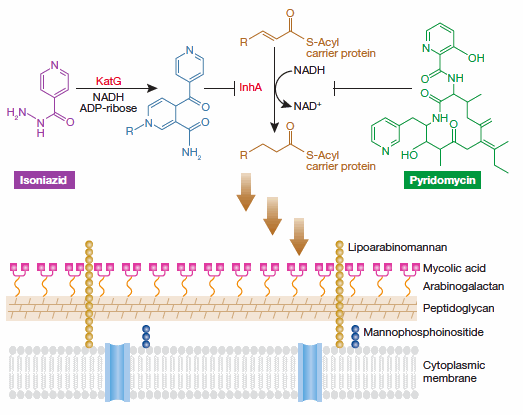
Mycobacterium tuberculosis stained (red) in sputum sample. Image: Centre for Disease Control and Prevention
A natural compound found in soil kills antibiotic-resistant Mycobacterium tuberculosis.
Current antibiotics are rapidly losing their medicinal potency as bacterial strains continuously mutate, rendering them resistant to treatment. Over 8.8 million people are infected with Tuberculosis (TB) and 1.4 million people die from the disease each year.
TB poses an even greater global health threat as it becomes increasingly untreatable due to widespread drug resistance. Alternative treatments are desperately needed, which is why a group of scientists working in Switzerland have dedicated their research towards developing a new drug made from a product secreted by soil bacterium, called pyridomycin.
“Nature and evolution have equipped some bacteria with potent defence mechanisms to protect them against other bugs that share their habitat,” Stewart Cole, lead author of the study published in EMBO Molecular Medicine and professor at the École Polytechnique Fédérale de Lausanne (EPFL), said in a statement. “Screening natural products generated by these organisms is therefore a powerful way to find possible new drugs to fight infectious diseases.”
Pyridomycin was first reported in 1953 but its potential was never fully investigated. Cole and the research team found that it specifically inhibits an enzyme named inhA that is responsible for resistance in Mycobacterium tuberculosis, the organism that causes TB. Existing TB drugs such as isoniazid also target this protein; however pyridomycin binds at a different site and initiates a different sequence of biochemical events. The scientists believe it is this difference that gives the natural soil-derived compound its edge against antibiotic-resistant bacteria.
The team treated live bacteria cultures with pyridomycin and found that the compound depleted mycolic and fatty acids, which are vital components of the bacterial cell walls. An important feature of this natural antibiotic is that it attacks bacteria growing within macrophages, which are immune to many current front-line antibiotics.
Professor Gerard Wright, from the Department of Biochemistry and Biomedical Sciences at McMaster University in Canada, explains how this research offers a way forward in antibiotic drug discovery; “a field that is anxiously searching for new paradigms for success,” in a review article of the current paper. “The identification of a natural product inhibitor of InhA with antimycobacterial effects is an important breakthrough,” Wright says. “This work also points out the importance of reinvestigating abandoned molecules as leads for new antibacterial agents.”

Pyridomycin inhibits InhA, which is responsible for mycolic acid formation. InhA is also inhibited by isoniazid, which requires activation by KatG. Image: Gerard Wright, 2012
Source: European Molecular Biology Organisation






